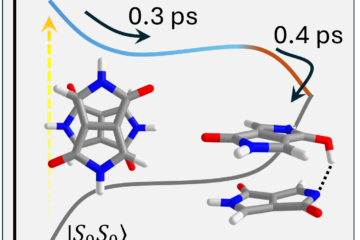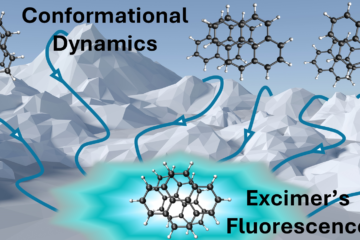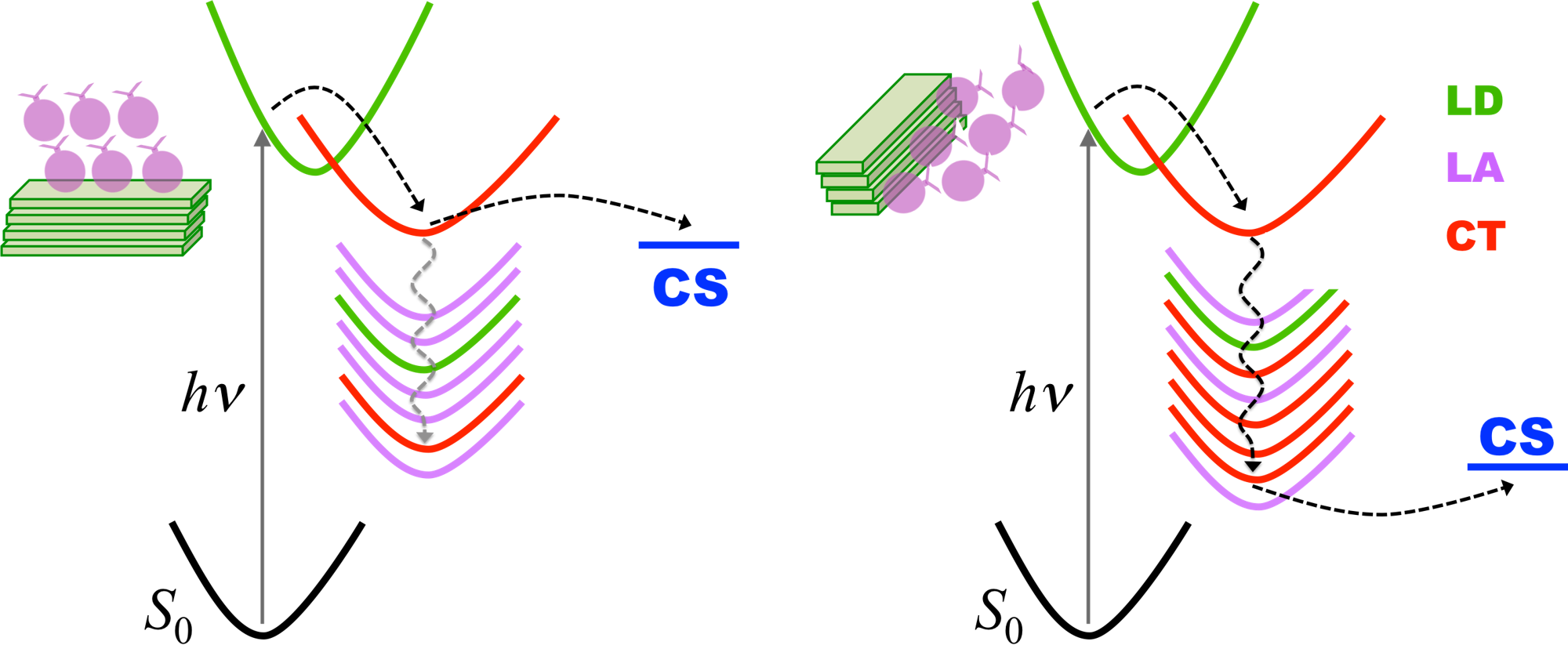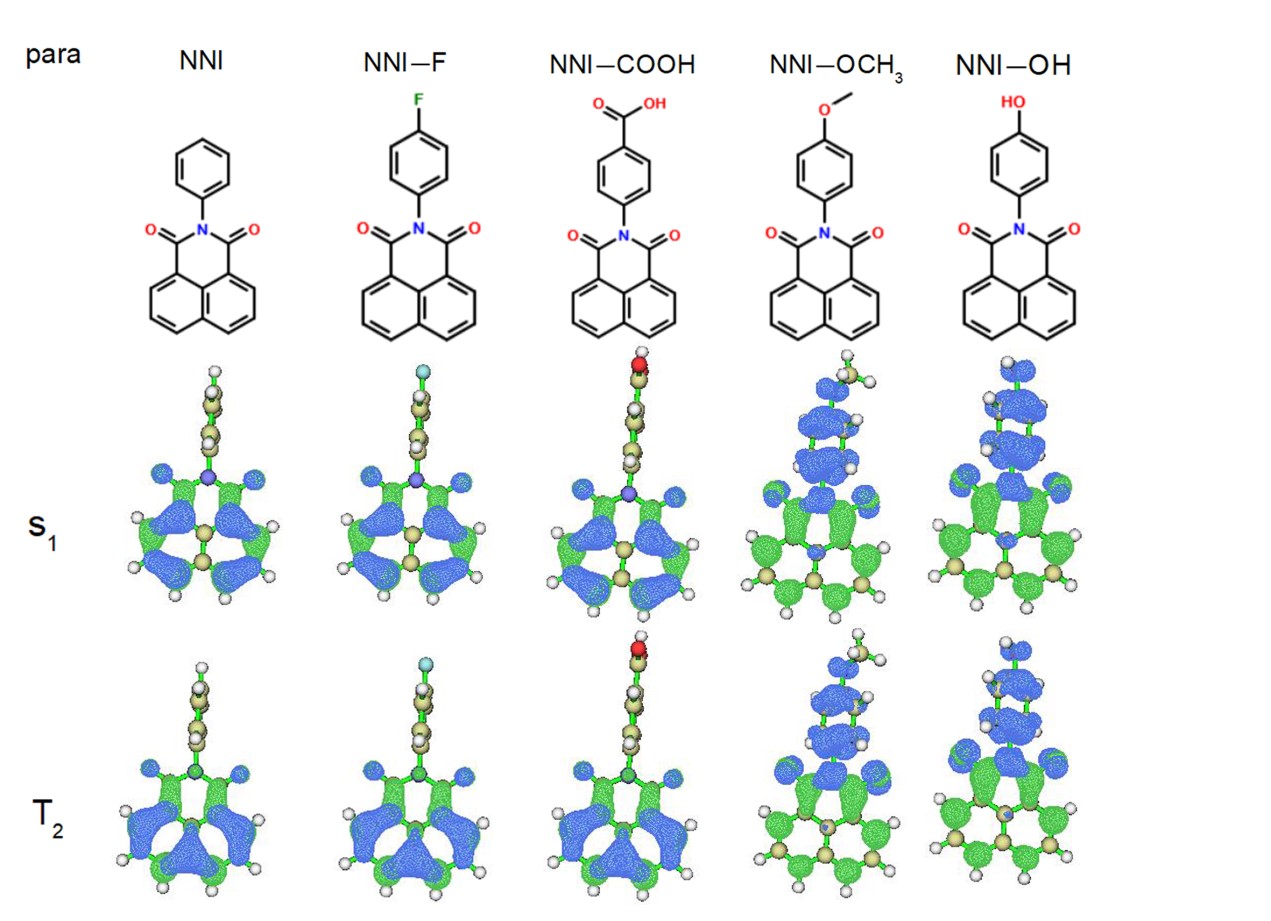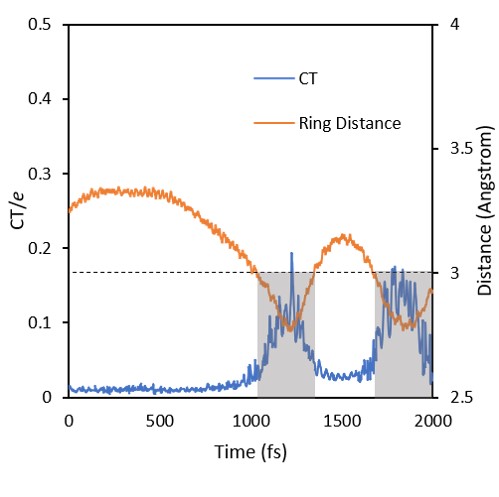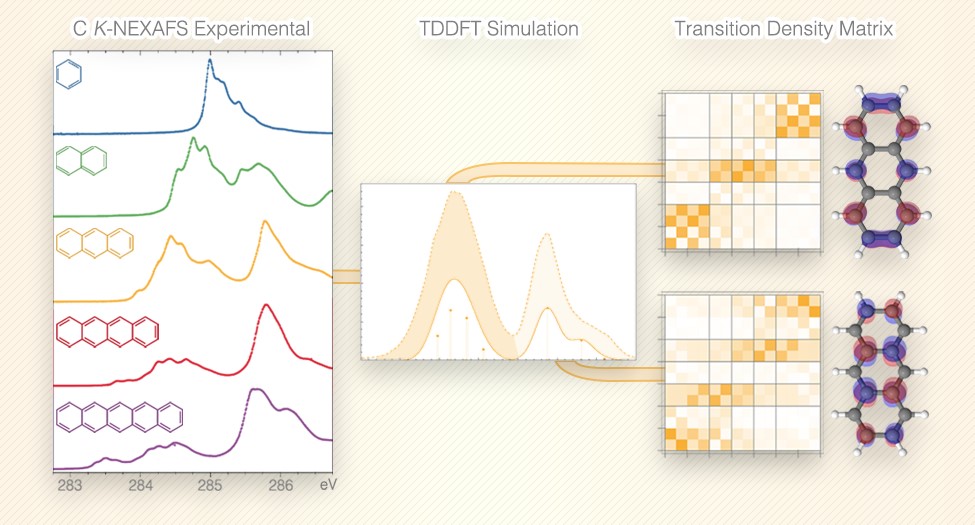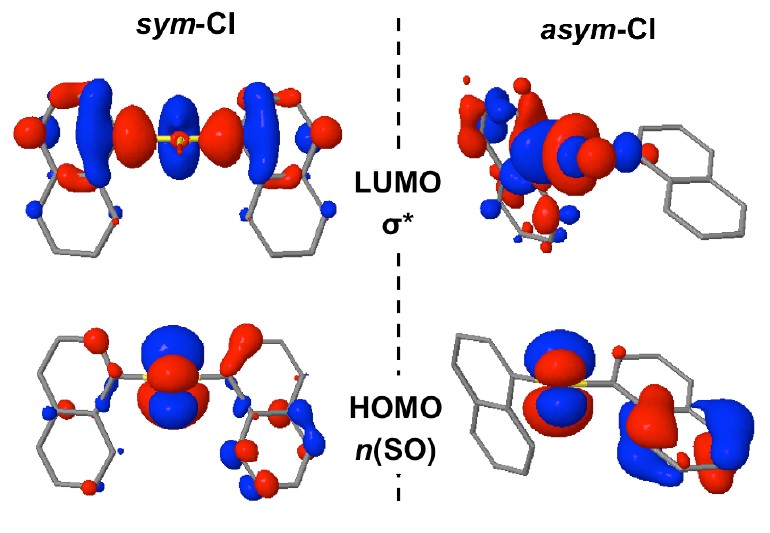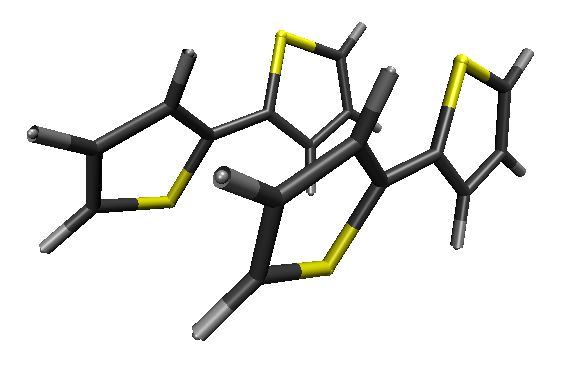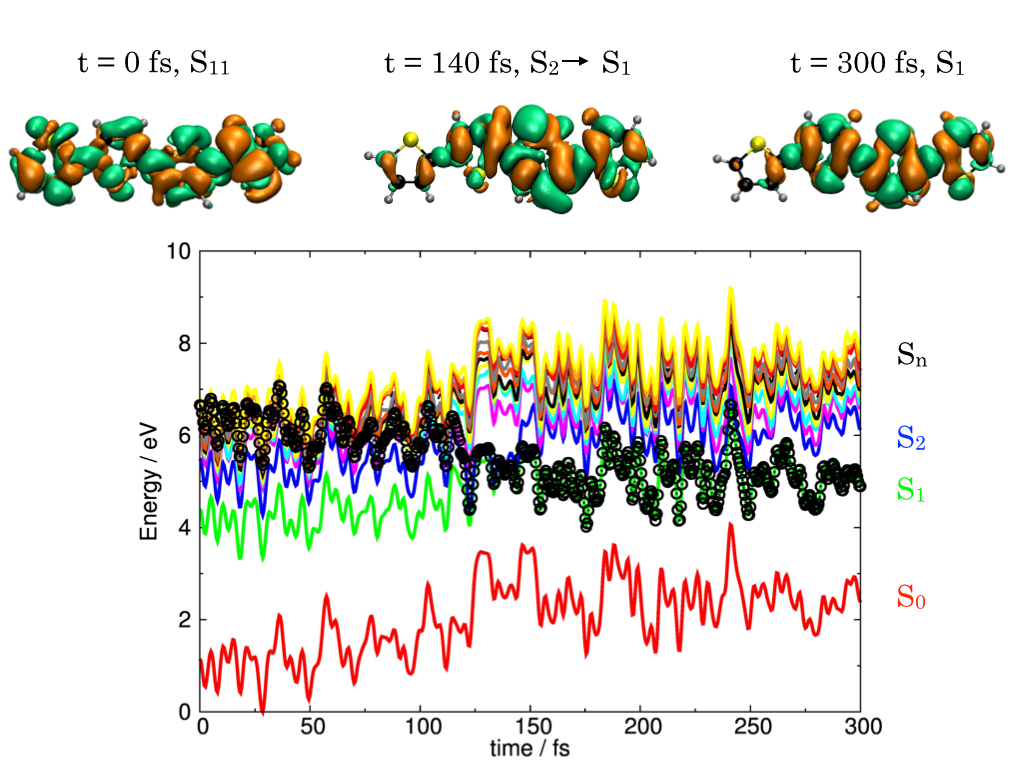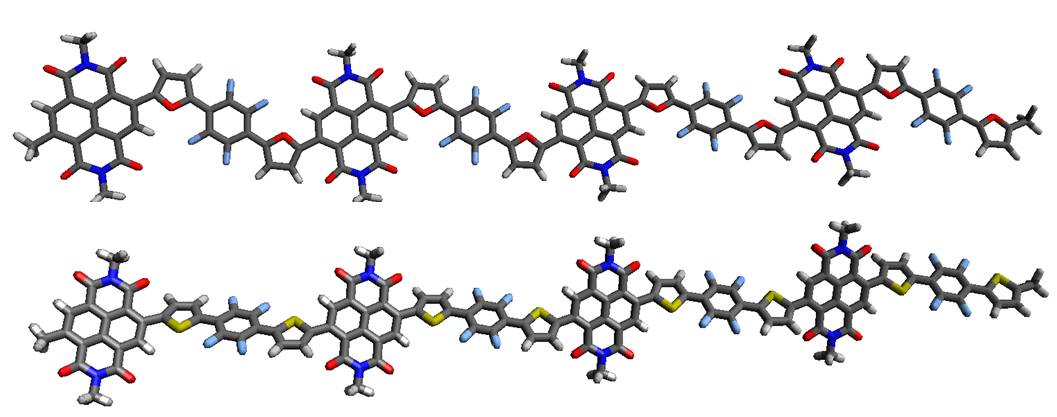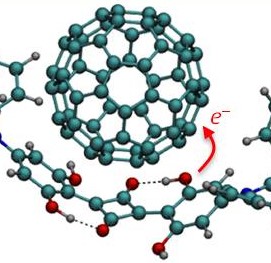Organic photodevices
Shedding Light on Pyrene Excimers
TD-DFT and Machine Learning together decipher the competition between thermal relaxation and photoemission.
Organic photodevices
Using π electrons to control doubly-excited states
Energetic stability of doubly-excited states depends on the number of π electrons.
Organic photodevices
How Do Excitons’ Size and Density Depend on Heterojunction’s Architecture?
Simulations show how to control charge separation from hot or cold excitons.
Organic photodevices
Excitons and Charge Transfer in Tetracene Dimers
Stacked-excimer double excitation is the door for singlet fission.
Organic photodevices
Nonadiabatic Dynamics of Anthracene-Tetracyanoethylene Complex
Protic environment creates an ion-pair CT ground state.
Organic photodevices
Biazobenzene ring shows strong stereoselectivity upon photoexcitation
Cyclobiazobenzene twists clockwise in three out of four UV excitations.
Organic photodevices
How to activate phosphorescence in a fluorescent molecule
Chemical induction of a CT state can restrain fluorescence, promoting ISC.
Organic photodevices
Dynamics of Benzene Excimer Formation
Bezene excimers are formed within 1 ps and die after 0.3 ps.
Organic photodevices
High-Resolution NEXAFS for Condensed Polyacenes
Chemically different carbons cause dichroism in X-ray excitation of polyacenes.
Organic photodevices
Hot and Cold Charge Transfer in Organic Donor/Acceptor Interfaces
Charge separation follows different photophysics in different donor/acceptor arrangements.
Organic photodevices
Photophysics of Sulfur-Bridged Naphthalene Dimers
Sulfur bridge’s oxidation state dramatically changes the photoluminescence of bichromophores. That’s why.
Organic photodevices
Organic Photovoltaics: Make Light, Not Heat
A new approach based on dynamics simulations is proposed to boost the efficiency of organic photovoltaics.
Organic photodevices
Exciton Relaxation in Oligothiophenes
Ultrafast dynamics simulations show how excitons localize in an organic polymer.
